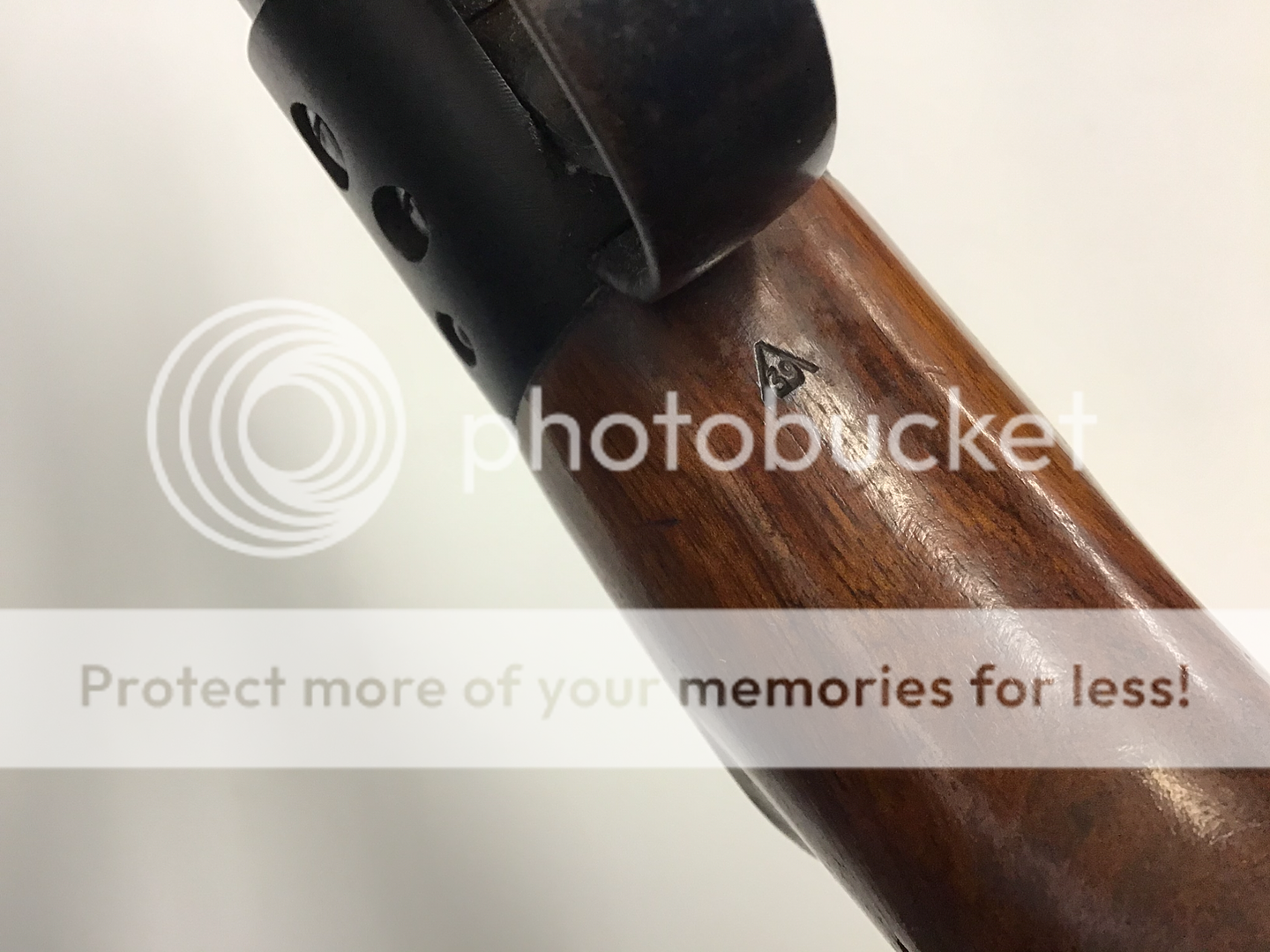The etching is all there, just a nightmare to photograph with an ipad and fluorescent lighting.
I noticed a wee stamp on the stock

The Standards were not 'designed' to produce any particular foot poundage, certainly not 11 - 12 ft lbs as such. that limit was not introduced until 1968 I believe. They were designed to be powerful however and a new rifle would produce far in excess of the current 12 ft lb limit. I have seen such give a consistent 700 fps with 14.4 g Eley Wasp over a Skan chrono, no dieseling, with a 12 fps consistency!
Anecdotal evidence also suggests that these great old rifles would easily outshoot a modern gun limited to 11 - 12 ft lbs, back in their day.
Thank you for that; it is most interesting.
Someone, here, explained that when the 12ft/lb limit was introduced, it was introduced so as to encompass what was already being manufactured or had been manufactured already. That way, British manufacturers would not be compromised by legislation. It was considered, therefore, that 12ft/lb would cover existing air rifles. Garvin might have more information on this.
I suppose, in those days, it was difficult to obtain a power reading and penetration tests were the norm.
Probably, today, after approx. 100 years the springs have lost some of their power. Whilst I was aware that there were exceptions achieving over 12ft/lb, it would be interesting to know what others have experienced here.
I wonder if, in the example you witnessed, a more powerful spring had been introduced.
As you say, these were great old rifles and I rather think that they were not excelled until well into the '70s. The accuracy was not bad either: an inch group at 25-30 yards is easily achievable.
So far as the rifle in this thread is concerned, the high quality photographs and light tend to magnify the most minor scratches, etc. With the exception of the rear sight wooden base - to which someone has already referred - and the wrecked screws - this rifle appears to be in very good condition. I suspect it will be possible to obtain a price in the region of £300-350.
Last edited by andrewM; 05-12-2019 at 10:09 AM. Reason: grammar!
The Standard in question was little used and original, and the gunshop where it was tested/owned, removed the mainspring which turned out to be the original 2 part item!
I believe the reason the 12 ft lb limit was introduced was to protect British products (BSA Airsporter/Webley Mk.3) which in the 1960's produced 10 -11 ft lbs, from the American gas and pump up rifles which invariably would easily go over 12 ft lb - ie the Sheridans, Benjamins and Crosmans.
Well, there seems little question about that. I wonder whether it was generally representative. What a unique specimen from an earlier era. Perhaps the rather greater recoil had some impact on accuracy.
Such a pity we lost our lead in air rifle technology in the UK. I think the later Airsporters were no improvement upon the old Standards, apart from the introduction of better stocks.
We haven't lost our lead in (sporting) air rifle technology! In terms of spring guns people like Venom Arms, Airmasters, Whiscombe, Air Arms, etc, developed and tuned spring air rifles to a point whereby only decades later did the Germans in the guise of Walther for example try and do a similar thing. Weihrauch spring guns to a large extent are still made very similarly to as they were in the 60's. Which is why so many people tune them.
In terms of PCP's Daystate pioneered the modern pre charged rifle, as did Ripley and other small businesses, and it was years before Weihrauch for example introduced their HW100 range.
Where you might have a point is in terms of Match air rifles where the Germans have indeed ruled the roost. However we are discussing sporting rifles here. Some patriotism please!
I cannot disagree with your observations, excepting in terms of the manufacture of barrels. However, despite this British technology, we have not maintained our earlier lead in terms of volume production. Many British manufacturers use German barrels and I am not sure that any are made here these days. The leading springer manufacturers are from Germany, albeit we produce some limited competition from such splendid manufacturers as Air Arms. We were also ahead of the game with the PCPs. I sold my PCP; as Lakey observed here sometime ago, they do not have a soul! I recently bought a Walther LGV. I have yet to find the time to test it but, despite its weight, it seems to be the best break-barrel available - if informed opinion can be relied upon.